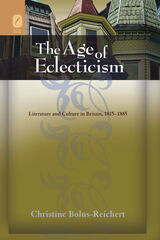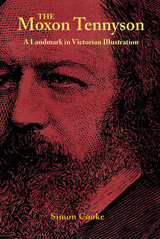

The Idylls of the King is one of the indisputably great long poems in the English language. Yet Tennyson's doom-laden prophecy of the fall of the West has been dismissed as a Victorian-Gothic fairy tale. John D. Rosenberg maintains that no poem of comparable magnitude has been so misread or so maligned in the twentieth century as Tennyson's symbolist masterpiece.
In The Fall of Camelot the author calls into question the modernist orthodoxy that rejects all of Victorian poetry as a Waste Land and ignores the overriding importance of Tennyson to the development of Yeats, T. S. Eliot,and the symbolists. Far from being an escapist medieval charade, the Idylls offers an apocalyptic prevision of the nightmare of modern history. Concealed under the exquisitely romantic surface of the verse is a world of obsessive sensuality and collapsing values that culminates in the "last dim weird battle the West." Perhaps the subtlest anatomy of the failure of ideality in our literature, the Idylls is not only about hazards of mistaking illusion for reality; it dramatically enacts those dangers, ensnaring the reader in the same delusions that maim and destroy the characters.
Rosenberg shows that Tennyson has created a new genre whose true originality criticism has yet to perceive. By employing landscape as a symbolic extension of character, Tennyson obliterates the gap between self and scene and frees himself from bondage toconventional narration.
Throughout the Idylls charactercannot be extricated from setting orsymbol, and neither has substanceapart from the narrative in which it isenmeshed. In essence, the narrativeis a sequence of symbols protracted intime, the symbolism a kind ofcondensed narration.
"Timescape" in the Idylls, like landscape, serves to bind all eventsof the poem into a continuous present.Arthur is at once a Christ figure andSun-King whose career parallels that ofhis kingdom, waxing and waningwith the annual cycle. At the heart ofArthur's story lies the dual cycle of hispassing and promised return.Incorporating this cycle into itsstructure, the Idylls is itself a kind ofliterary second coming of Arthur, aresurrection in Victorian England of thelong sequence of Arthuriads extendingback before Malory and forwardthrough Spenser, Dryden, Scott, andTennyson.

Many years in preparation, this first volume of Lang and Shannon's edition of Tennyson's correspondence lives up to all expectations. In a comprehensive introduction the editors present not only the biographical background, with vivid portrayals of the dramatis personae, but also the story of the manuscripts, the ones that were destroyed and the many that luckily survived.
The Tennyson who emerges in this volume is not a serene or Olympian figure. He is moody, impulsive, often reckless, now full of camaraderie, now plagued by anxiety or resentment, deeply attached to close friends and family and uninterested in the social scene. His early life is unenviable: we see glimpses of the embittered, drunken father, the distraught mother, the swarm of siblings in the rectory at Somersby in Lincolnshire. The happiest period is the three years at Cambridge, terminated when his father dies, and the two years thereafter, with Arthur Hallam engaged to his sister and a frequent visitor at their house. The shock of Hallam's death in 1833, coupled with the savage attack on Tennyson's poems in the Quarterly Review, is followed by depression, bouts of alcoholism, financial problems, and gradually, in the 1840s, increasing recognition of his work. The year 1850 sees the publication of In Memoriam, his long-deferred marriage at age forty to Emily Seliwood, and his acceptance, not without misgivings, of the post of Poet Laureate.
The editors have garnered and selected a large number of letters to and about Tennyson which supplement his own letters, fill in lacunae in the narrative, and reveal him to us as his friends and contemporaries saw him.

The hazy settings and amorphous auditors of Tennyson’s dramatic monologues are often contrasted—at Tennyson’s expense—with Browning’s more vivid, concrete realizations. Hughes argues that Tennyson’s achievements in the genre are, in fact, considerable, that his influence can be traced in such major figures as T. S. Eliot, and that the monologue occupies a far more central position in Tennyson’s poetic achievement than has hitherto been acknowledged.
Hughes’ study challenges the traditional view of Tennyson’s inferior achievement, and her account of the elements and operation of the dramatic monologue, especially as demonstrated by three of its most important practitioners, will be of interest to all those concerned with the monologue as a poetic mode.


Although the reaction against Tennyson may have begun at his funeral, there is not doubt he was the central English poet of the nineteenth century as well as a fixture of the Victorian age—the fashioner of a public image that, in Tennyson’s case, bears a complex relation to the poetic imagination itself. Herbert Tucker provides a definitive account of the first half of Tennyson’s career, arguing that the poet self-consciously constructed his creative life in a dynamic balance with the work of his Romantic predecessors and with variously seductive and repellent features of Victorian culture.
Tucker narrates the life in Tennyson’s poems through a linked sequence of close readings, which supplement intrinsic interpretation of texts with considerations of Tennyson’s romantic allusiveness, generic experimentation, and aspiration to cultural spokesmanship. Explication of major poems from Tennyson’s formative years through the first decade of his unparalleled ascendancy illustrates the ways in which his original and pervasive sense of inevitability found developing expression, as a matter both of poetic form and of poetic argument. Tucker shows how Tennyson, through the authority of verbal craft that was his hallmark, consistently elaborated upon the fatalistic, intimate yet impersonal melancholy that was a source, and at length a result, of his prodigious public success.
Anyone interested in Victorian literature will read this book with profit, for it tells us a great deal not only about the preeminent Victorian poet but also about the cultural turn of mind that transformed Romanticism, during the second quarter of the nineteenth century, into a Victorian mode.

Here is an analysis of Tennyson’s major poetry that clarifies the poet’s relationship to the artistic traditions he so extensively exploited and so radically modified. It is a portrait of Tennyson as manipulator, not mere borrower, of forms.
Tennyson and Tradition traces the threads that at the same time unite Tennyson’s work and tie it to the traditions the poet believed he had inherited. Robert Pattison shows why Tennyson considered the venerable idyll form a fitting vehicle for his modern portraits—above all the Idylls of the King. Analysis of In Memoriam brings further understanding of Tennyson’s poetic credo.

Scholars since Paden have commented on the anxieties embedded in Tennyson's poetry, but this is the first study to examine them systematically. Within each poem Goslee discovers a vulnerable authorial presence threatened by some Other—a personification of divine, sexual, or natural power—which encroaches upon it from the fringes of the poem's imaginative universe. This Other is always interpreted, humanized, or conciliated by some mediating figure, yet the more effectively the mediator confronts an otherwise alien cosmos, the more alien he or she becomes to the authorial presence.
Goslee's approach toward understanding the conflict between Tennyson and the characters he creates includes elements of formalism, psychodynamics, and literary history without being narrowly confined to any one of these. His subtle, elegant reading mediates between those critics who stress authorial intention (e.g., Reed's Perception and Design) and the growing number of critics who follow E. D. H. Johnson in claiming that Tennyson wrote more subversively than he wanted to admit. This original, highly suggestive volume will be important for all Victorian scholars and literary critics.
READERS
Browse our collection.
PUBLISHERS
See BiblioVault's publisher services.
STUDENT SERVICES
Files for college accessibility offices.
UChicago Accessibility Resources
home | accessibility | search | about | contact us
BiblioVault ® 2001 - 2024
The University of Chicago Press









